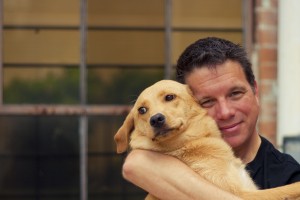Michael Baugh, CPDT-KA, CDBC
It’s not rocket science but, sure enough, it’s science. That may be the coolest thing about clicker training. There’s hard core science behind it. Okay maybe that’s the second coolest thing. Number one is how well it works.
So dial back to B.F. Skinner. He’s the first one who toyed with the idea of using secondary reinforcement to help animals (people too) learn. What’s that? Good question. But let’s look at first things first: primary reinforcement – the stuff that builds behavior. Usually primary reinforcement is something with a bit of biological drive behind it (think food, sex and survival). Learn to hunt; earn food. Get the courtship right; get the girl. Outsmart the tiger; live another day. Those are all important behaviors with strong primary reinforcement keeping them going. So, what about our dogs? Sit nicely; get your dinner. Learn a new trick; get some treats. Get it?
Now let’s turn to the secondary reinforcement. That’s anything that signals to the animal (or person) that the primary reinforcement is on the way. Sea mammal trainers use a high pitched whistle. Dolphin jumps the hoop; trainer blows the whistle; come get your fish. Game shows have their own version. Contestant answers the question; a bell or a siren sounds; and here’s the announcer with your prize package. Dog trainers use a clicker. Rover rolls over; trainer clicks as soon as it happens; Rover gets his bit of food. It’s called a secondary reinforcement because it isn’t the real deal (the primary). It signals or predicts the good stuff is on the way.
Why a clicker? There’s some evidence Skinner thought about using a cricket toy which is very similar to a modern clicker. But it wasn’t until much later that his students Marian and Keller Breland experimented clickers. Karen Pryor made them the industry standard in modern dog training.
Maybe the real question is: why click? The answer is super simple.
( Read More )


